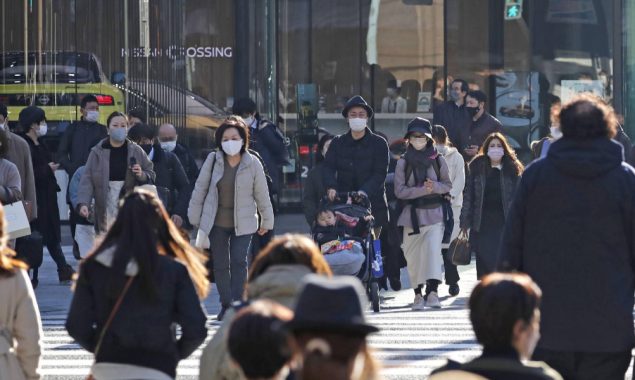
TOKYO – The head of the Japanese government’s coronavirus advisory panel Thursday announced the extension of quasi-emergency restrictions in place.
In 13 prefectures that are set to expire on Sunday Shigeru Omi, the Japanese government’s top COVID-19 adviser, told press that there was “no point” in only relying on COVID quasi-emergency measures to combat Japan’s rampant coronavirus crisis. “Places of infection are now spreading beyond dining establishments, to homes, workplaces, and other locations,” Japan’s public broadcaster NHK quoted Omi as saying.
“There’s no point in only requiring measures for restaurants and bars,” Omi said, stressing the need to implement wider-ranging restrictions. The quasi-emergency measures, which when extended will affect 36 of the nation’s 47 prefectures, merely allow for local governors to request restaurants and bars to curtail operating hours and refrain from serving alcohol, and citizens being urged not to travel across prefectures borders.
Experts on the matter have said the quasi-emergency measures have done little in the past to significantly combat the outbreak of COVID-19 cases in Japan, with the highly-transmissible Omicron variant of the virus allowed to reach record highs nationwide including in the capital. The government has been again widely criticized for exacerbating the nation’s COVID-19 crisis as it remained too slow to roll out vaccines, most recently the booster jabs.
In addition, while the government’s emergency antiviral measures have predominantly been targeting those in their 20s and 30s likely to visit bars and restaurants, experts including Omi have said that the biggest “at-risk” populations are in fact children and the elderly. “Infections are now leveling off or going down among people in their 20s and 30s,” said Omi, adding that “the elderly and younger people are now the two main groups being affected, with some of them becoming seriously ill.” He stressed there was a need to focus more on the elderly, who are at a “higher risk of developing serious symptoms.” Omi also said that experts on the panel had called for deliberations on an exit strategy, including the lifting of the potentially ineffective quasi-emergency measures.
“We need to continue with our efforts to reduce the burden on the health care system,” Daishiro Yamagiwa, who is in charge of the government’s COVID-19 response taskforce and also serves as the country’s economic revitalization minister, told the panel meeting. “Our focus with the measure should be on preventing a halt to social and economic activities as much as we can,” he added. The government also plans to place the western prefecture of Kochi under the emergency measures from Saturday until March 6, as the nation continues to grapple with the rampant spread of the Omicron variant-driven COVID-19 crisis. Japanese Prime Minister Fumio Kishida will formalize the decision later in the day. While he has said that the pace of increase in new cases has been “clearly slowing,” virologists warned that Japan’s sixth wave of infections has not yet peaked.
The country is now likely to face a surge in cases as hay fever season will soon kick-in, as many people will be prone to coughing and sneezing in public places, increasing the probability of virus being transmission and infectious diseases, experts have said. Japan is also struggling with a sub-variant of the highly-transmissible Omicron variant, currently known as the BA.2 version, Takaji Wakita, an expert who sits on a health ministry’s advisory panel, said Wednesday.
Read More News On
Catch all the Health News, International News, Breaking News Event and Latest News Updates on The BOL News
Download The BOL News App to get the Daily News Update & Follow us on Google News.




